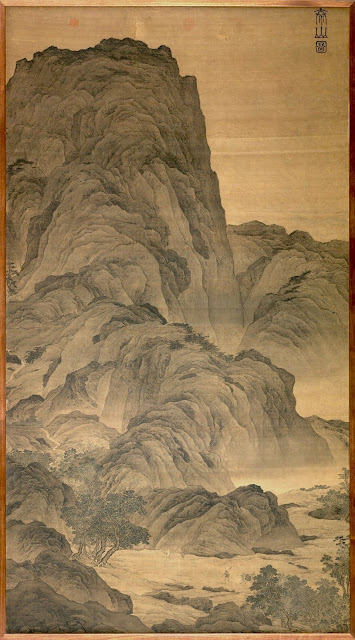FERNANDO AMORSOLO (1882-1972),
Mount Banahaw (2, 170m- 7, 120 ft)
Philippines (Luzon)
The mountain
Mount Banahaw (2, 170m- 7, 120 ft) is an active volcano on Luzon in the Philippines. The three-peaked volcano complex is located between the provinces of Laguna and Quezon and is the tallest mountain in the Calabarzon region dominating the landscape for miles around.
Mount Banahaw is a traditional pilgrimage site for locals, believed by many as a "Holy mountain", a spiritually-charged location. The mountain and its environs are considered sacred by local residents; the water from its sacred springs are deemed "holy water" for allegedly having beneficial qualities, issuing forth from locations called "puestos" or "holy sites". These sites are unique natural features composed not only of springs, but also caves, streams and boulders; with names with biblical allusions, and shrines erected in, on or around them. These locations were allegedly revealed to a man named Agripino Lontoc by the "Santong Boses" or the "Holy Voices", which also gave the names to these places way back during the Spanish Colonial Era. Another one of this mountain is the adjacent Mount Banahaw de Lucbán.
Due to incessant climbing activity the mountain trails have become littered with trash. In March 2004, the Department of Environment and Natural Resources ordered a 5-year suspension of hiking activity in the mountains, covering the Dolores and Sariaya trails. Reopening was delayed was then scheduled to March 2012, but was further extended to February 2015.
The painter
Fernando Cueto Amorsolo was one of the most important artists in the history of painting in the Philippines.Amorsolo was a portraitist and painter of rural Philippine landscapes. He is popularly known for his craftsmanship and mastery in the use of light. After graduating from the Univeajor influences on his work. Amorsolo set up his own studio upon his return to Manila and painted prodigiously during the 1920s and the 1930s. His Rice Planting (1922), which appeared on posters and tourist brochures, became one of the most popular images of the Commonwealth of the Philippines. Beginning in the 1930s, Amorsolo's work was exhibited widely both in the Philippines and abroad. His bright,optimistic, pastoral images set the tone for Philippine painting before World War II . Except for his darker World War II-era paintings, Amorsolo painted quiet and peaceful scenes throughout his career.
_______________________________
2018 - Wandering Vertexes...
by Francis Rousseau
_______________________________
2018 - Wandering Vertexes...
by Francis Rousseau



















